Five ways to help 11-14 year-old students to improve their vocabularies for school and life
Vocabulary is essential to language development, and helps with:
- the acquisition of academic skills;
- early reading skills;
- generating inferences;
- reading comprehension;
- writing quality; and
- the expression of experiences, thoughts and feelings.
Vocabulary plays an increasingly important role as students move into adolescence. Typically developing students learn about 2,000-3,000 words a year: approximately two-eight root words per day!
We have to choose which words to teach carefully for two main reasons:
- Time: Vocabulary knowledge increases with how many times a word is encountered in context. It can take 8-20 exposures before a word is properly understood.
- Bang for buck: Teaching words explicitly helps students read taught words. But it does not transfer to unrelated words. We therefore need to teach words that are used across the curriculum and in other important environments.
High quality reviews of general vocabulary research suggests that explicit instruction, careful word selection, instructional activities requiring active processing of words, morphological awareness training (teaching students root words and affixes), semantic network development, and rich and motivating language learning environments are good practices to promote vocabulary development.
Vocabulary recommendations and resources for 11-14 year old students
- Teach vocabulary intentionally. For example, select words from Coxhead’s Academic Word List, such as “explain” and other exam verbs, and Hiebert’s most common word families. See our word lists here, and exam and essay verb resources here.
- Teach independent word-learning strategies, including morphological awareness training, starting with inflectional suffixes (e.g. -s, -es, -ed, -ing, -er, -est), high frequency prefixes (e.g. un-, de-, pre-, mis-) and then derivational suffixes (-ous, -ity, -ably), e.g. see Banter high frequency prefixes.
- Develop semantic networks and background knowledge: Use graphic organisers (e.g. from the Florida Center for Reading Research), and semantic feature analysis scaffolds (see our Word Learner and Semantic Feature Analysis resources).
- Increase opportunities for group discussion and writing with the target words.
- Provide a motivating, rich language learning environment. Select interesting texts, model excitement, encourage collaboration and fun (including idioms and jokes), use technology (but don’t get carried away), include problem solving and practice activities, and award points for spotting target words outside of class (e.g. on TV, in movies, the Internet).
Evidence-based vocabulary programs for 11-14 year-old students include Word Generation, ALIAS, PACT, and RAVE.
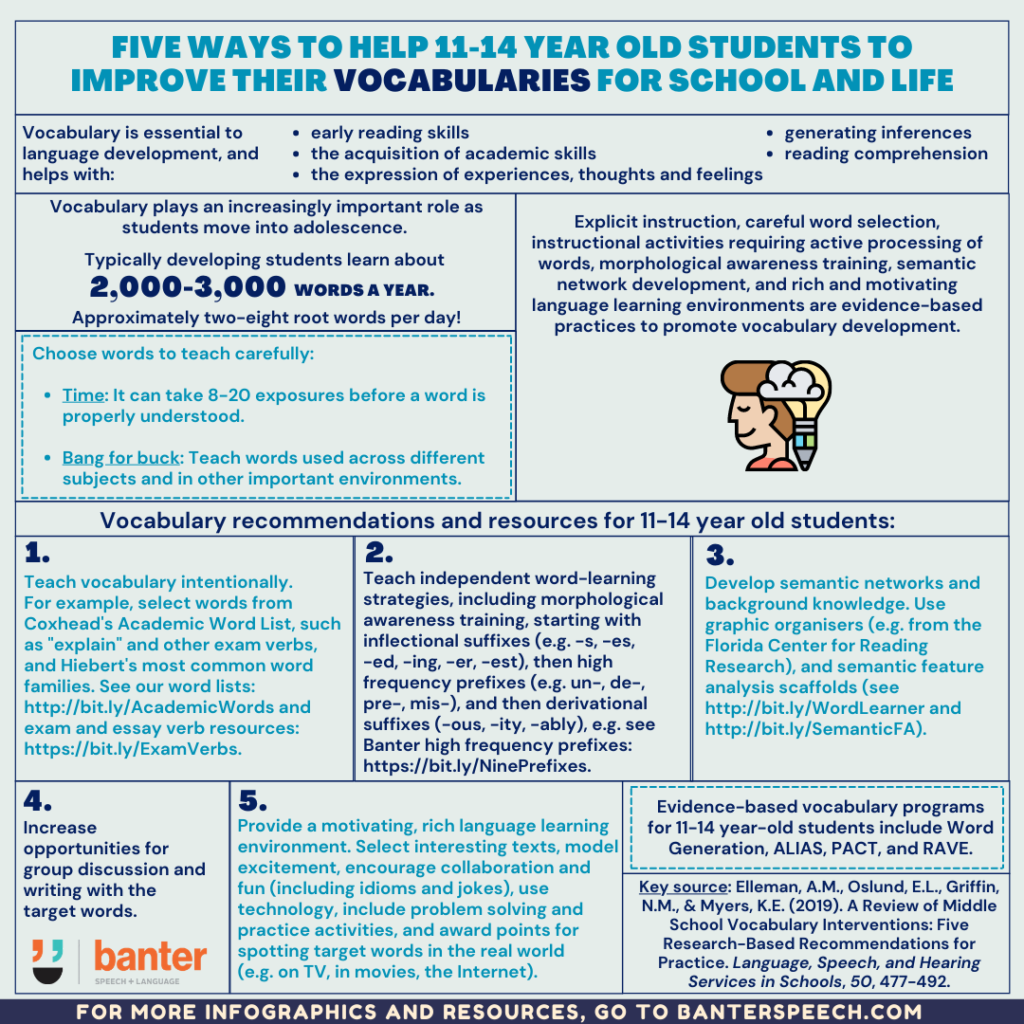
Watch our video for an accessible version of the infographic:
Key source: Elleman, A.M., Oslund, E.L., Griffin, N.M., & Myers, K.E. (2019). A Review of Middle School Vocabulary Interventions: Five Research-Based Recommendations for Practice. Language, Speech, and Hearing Services in Schools, 50, 477-492.
Related articles and resources:
- For reading, school and life success, which words should we teach our kids? How should we do it?
- Exam and Essay Verbs you need to know and use in High School
- High Frequency Prefixes for Reading and Writing: fully-scripted teaching resources for the 9 most common prefixes in English
- What is it? Semantic feature analysis – describing objects by key attributes
- Word Learner

Hi there, I’m David Kinnane.
Principal Speech Pathologist, Banter Speech & Language
Our talented team of certified practising speech pathologists provide unhurried, personalised and evidence-based speech pathology care to children and adults in the Inner West of Sydney and beyond, both in our clinic and via telehealth.

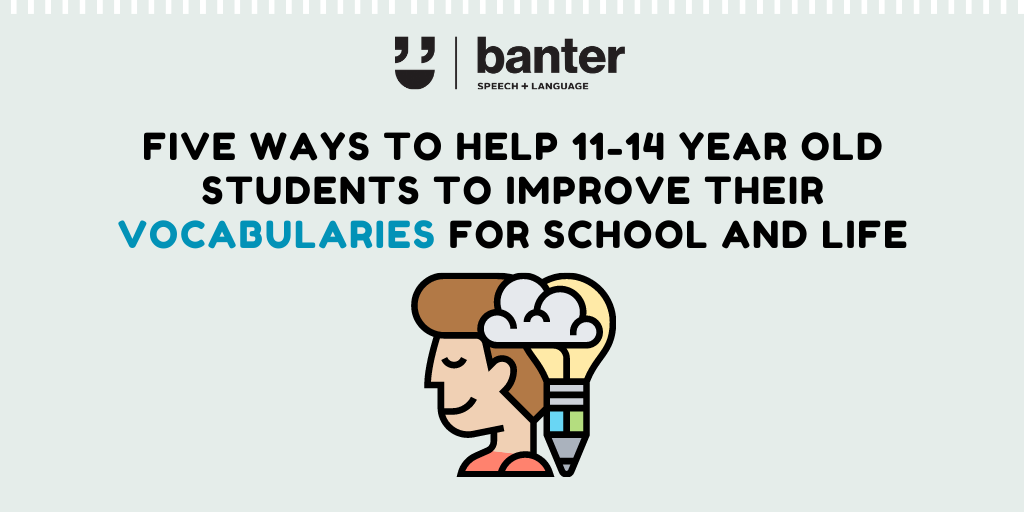







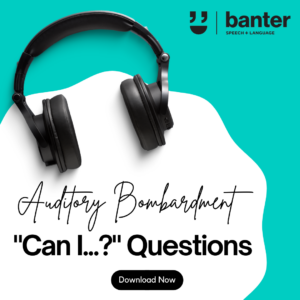 (L267) Can I...? Questions (Auditory bombardment)
(L267) Can I...? Questions (Auditory bombardment) 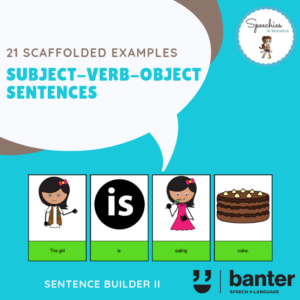 (L119) Subject-Verb-Object (SVO) Sentence Builders
(L119) Subject-Verb-Object (SVO) Sentence Builders 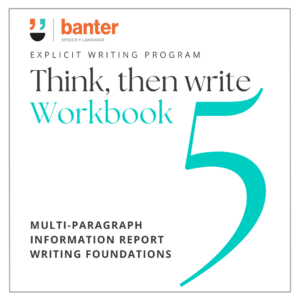 (R806) Think Then Write Workbook 5: Multi-Paragraph Information Report Writing Foundations
(R806) Think Then Write Workbook 5: Multi-Paragraph Information Report Writing Foundations 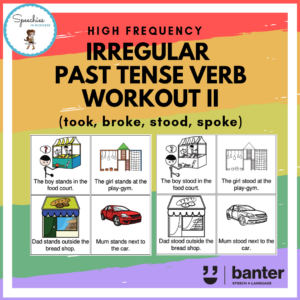 (L133) Verbs: Irregular Past Tense Verb Workout 2 (took, broke, stood, spoke)
(L133) Verbs: Irregular Past Tense Verb Workout 2 (took, broke, stood, spoke) 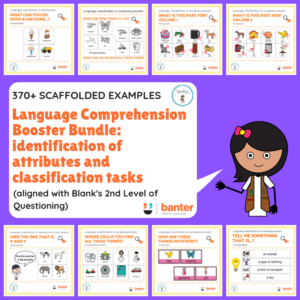 (L209) Blanks 2 Bundle: Language Comprehension Booster - Classification Tasks
(L209) Blanks 2 Bundle: Language Comprehension Booster - Classification Tasks 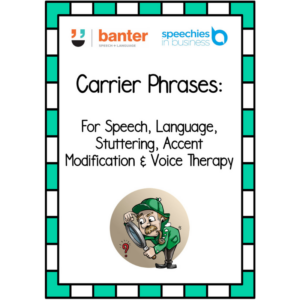 Carrier Phrases for Speech, Language, Stuttering and Voice Therapy
Carrier Phrases for Speech, Language, Stuttering and Voice Therapy